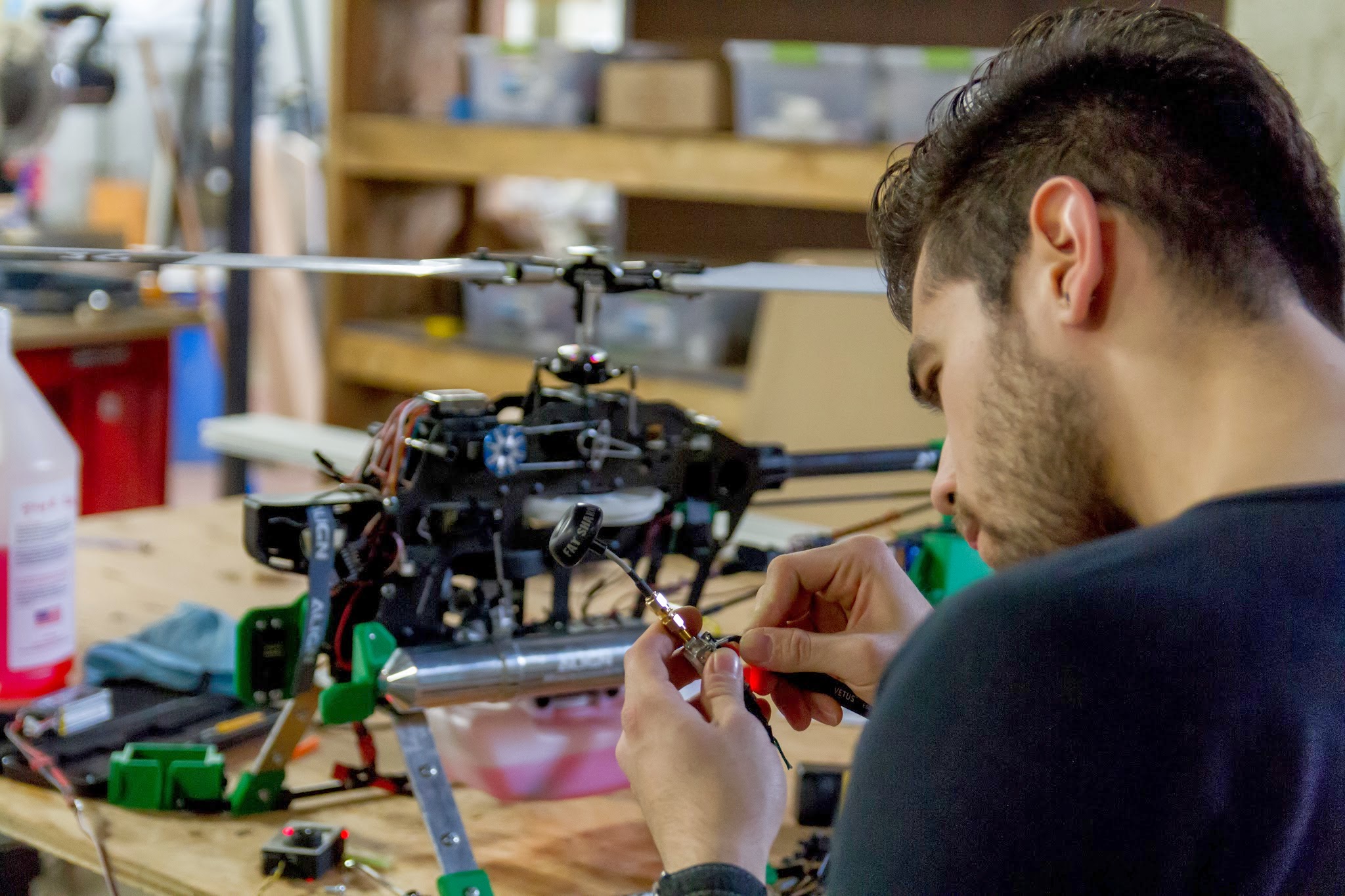SUAS Competition
SUAS Competition
Stevens Institute of Technology, 2014
For my senior design project, I worked with a team of 4 other mechanical engineers to spec and build a drone to compete in AUVSI’s Student Unmanned Aircraft Systems Competition. Unlike other schools entering with several years’ worth of prior work, our team was part of Stevens Institute of Technology’s inaugural year. The entire project started from scratch and was built over the course of the year by the five team members.
Although electric quadcopters are the most common airsystem layout, our design was chosen to best meet the competition requirements, which included long flights over a large area, and heavy payloads. In a timed competition where electric airsystems would need to return to ground station to replace spent batteries, We felt the best design was a nitromethane-powered single-rotor helicopter.
Our airsystem used an onboard microcontroller to take sensor measurements, stabilize itself, fly to GPS waypoints, survey the ground using an onboard gimbal-mounted GoPro, and relay its information and the live video feed to ground station through radio signals across two frequency bands. The drone could adjust flight plans based on input from ground station.
One of my responsibilities on the team was to plan and build the electronics of our system. This required managing multiple power requirements, data frequencies, and processors (on board as well as at a ground station). I found a microcontroller that handled our I/O needs with a cycle time fast enough to maintain flight, radio transmitters that met competition and FAA regulations, sensors with the correct precision to maintain safe flight, and enough Li-ion batteries to last the duration of the flight for our power requirements.










